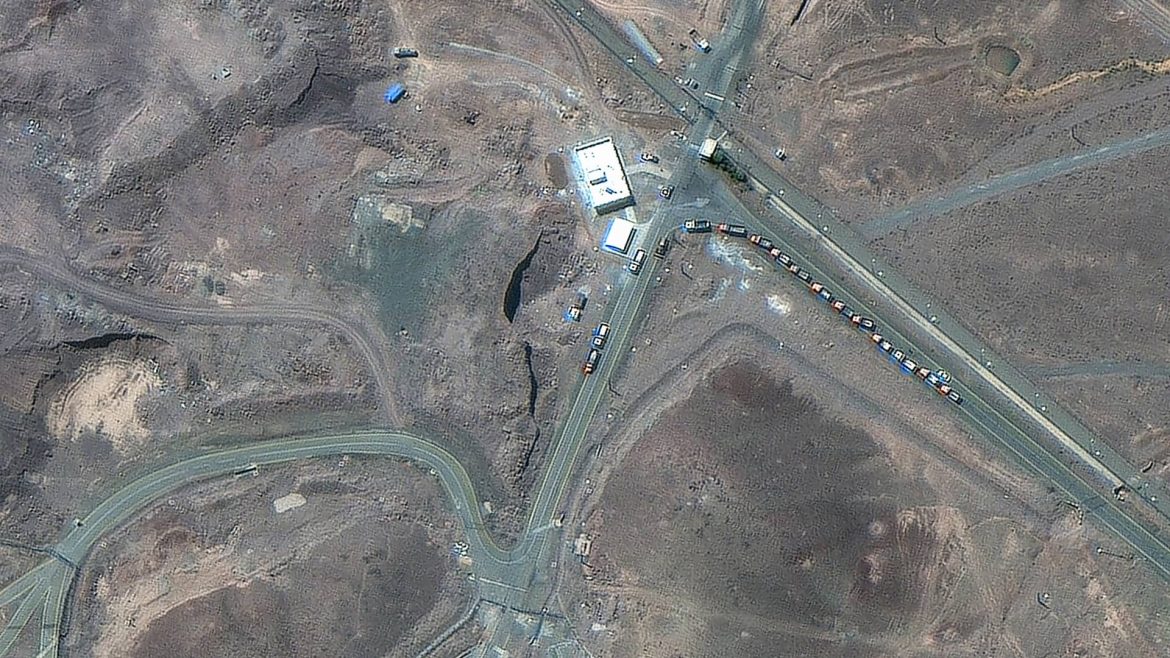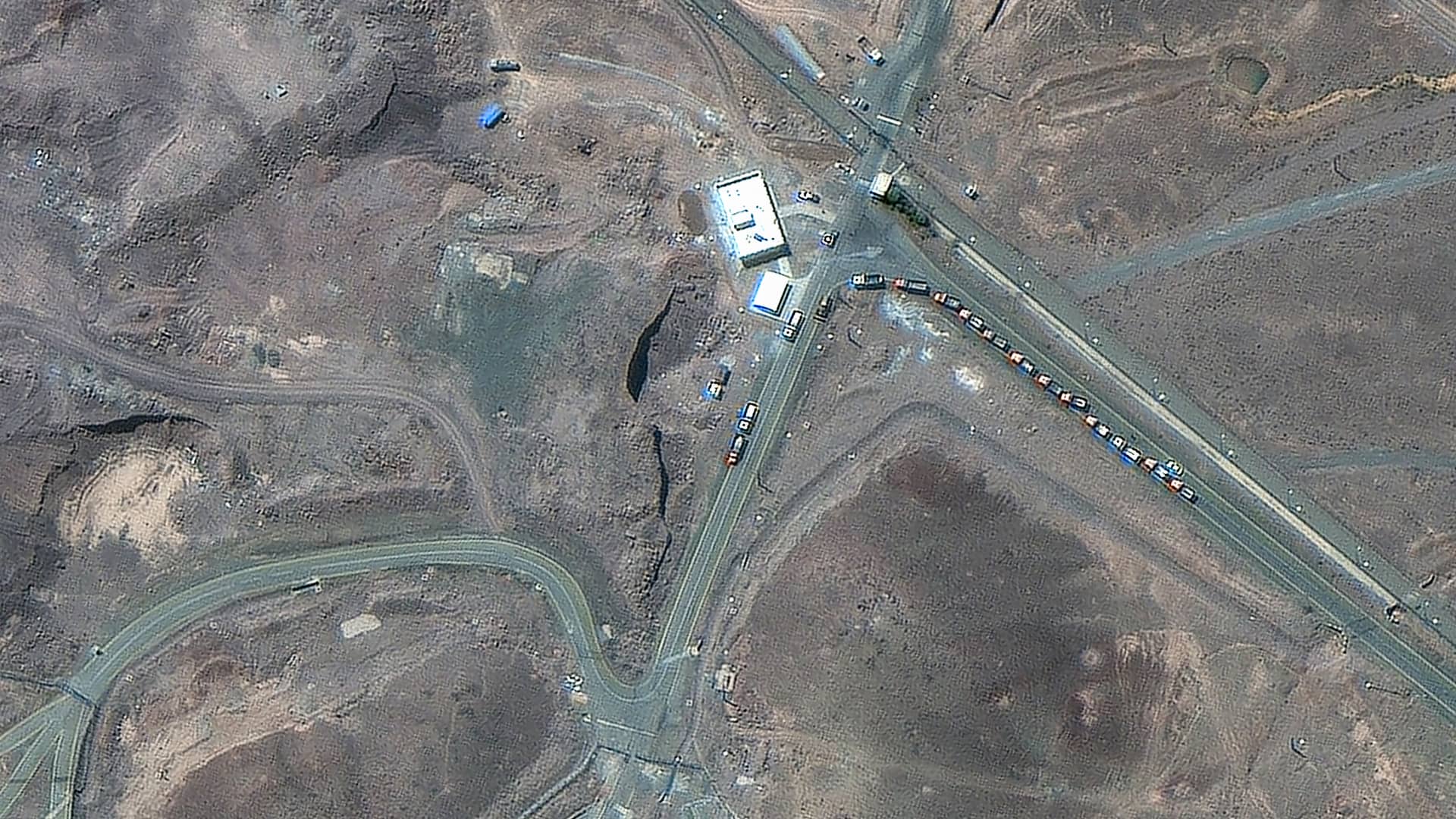The Strikes on Iran’s Nuclear Facilities: A Detailed Analysis
Recent U.S. and, reportedly, Israeli strikes have targeted several Iranian nuclear facilities, most notably the Fordo Fuel Enrichment Plant. These actions represent a significant escalation in the ongoing conflict between Israel and Iran, with the U.S. playing a direct, albeit carefully defined, role. Analysis of available information, primarily satellite imagery and expert commentary, reveals a focused effort to degrade Iran’s nuclear capabilities, specifically its uranium enrichment processes, while attempting to minimize wider regional fallout.
Fordo: The Primary Target and Its Significance
The Fordo facility has emerged as the central focus of these strikes. Located deep within a mountain – approximately 300 feet underground and reinforced with layers of concrete – Fordo is described as Iran’s “hardest-to-reach” nuclear site. Its construction began years ago, initially concealed from Western intelligence agencies, who later identified it as a suspected nuclear-related complex. The facility’s subterranean location and robust construction were specifically designed to withstand potential attacks, necessitating the use of powerful “bunker-buster” bombs, such as the 30,000-pound munitions reportedly deployed by U.S. B-2 Spirit stealth bombers.
The significance of Fordo lies in its role in uranium enrichment, a critical step in the production of nuclear weapons. It is vital to Iran’s nuclear ambitions, making it a prime target for any nation seeking to prevent Iran from developing a nuclear weapon. Prior to the strikes, satellite imagery captured by Maxar Technologies showed increased activity at Fordo, including the movement of cargo trucks near the underground entrance, suggesting a possible effort to reinforce the facility in anticipation of an attack. This activity raises questions about Iran’s preparedness and potential intelligence leaks.
Evidence of Damage and the Nature of the Strikes
Satellite imagery from Planet Labs PBC, Maxar Technologies, and analyzed by sources like the Associated Press, confirms damage to the entryways of the Fordo facility. Some images also indicate damage to the surrounding mountain itself. While the extent of the damage is still being assessed, initial reports suggest the strikes were focused on disrupting access to the facility and potentially damaging key infrastructure within.
Expert analysis, such as that provided by Justin Bronk of the Royal United Services Institute (RUSI), suggests the pattern of explosions is consistent with the use of penetrating bombs. However, the damage appears to be limited, with some reports indicating the core enrichment infrastructure remains intact. This suggests a deliberate strategy to degrade, rather than completely destroy, the facility.
Strikes also targeted other Iranian nuclear and military facilities, including Natanz – Iran’s main uranium enrichment facility – and Shiraz Electronics Industries. Imagery reveals destruction of aboveground buildings at Natanz, while reports suggest the possibility of a collapse at the underground Natanz facility.
Iranian Response and Concerns About Radiological Hazards
Iranian officials have confirmed the strikes and acknowledged damage to the facilities. However, they have downplayed the severity of the impact, attempting to portray the strikes as unsuccessful. The strikes occurred amidst a broader context of escalating tensions between Iran and Israel, and are linked to Iran’s recent drone and missile attacks on Israel.
A key concern surrounding the strikes is the potential release of hazardous materials. While experts currently believe the risk of widespread regional radiation is low, they acknowledge the possibility of releasing plumes of toxic chemicals. The Fordo facility, specifically, is involved in processing uranium isotopes, raising concerns about potential radiological hazards, even if limited. So far, strikes have created limited chemical and radiological hazards.
The Role of the United States and Israel
The U.S. involvement in the strikes has been a subject of debate. While the U.S. has historically maintained a policy of preventing Iran from acquiring nuclear weapons, direct military action has been limited. The recent strikes represent a shift in this approach, with the U.S. utilizing its advanced weaponry – specifically the bunker-buster bombs – to directly target Iranian nuclear infrastructure. Donald Trump characterized the strikes as a “military success,” highlighting the U.S. role.
Reports indicate that Israel initiated the attacks, with the U.S. providing support and potentially conducting strikes on Fordo. This division of labor suggests a coordinated effort to address the perceived threat posed by Iran’s nuclear program. The U.S. involvement appears to be aimed at reassuring Israel of its commitment to its security while also attempting to manage the escalation of the conflict.
Pre-Strike Activity and Intelligence Assessment
The unusual activity observed at Fordo in the days leading up to the strikes – specifically the accumulation of earth near the entrances – suggests Iran was attempting to reinforce the facility. This raises questions about whether Iran anticipated the attacks and, if so, how that intelligence was obtained. The increased activity also points to a potential effort to protect sensitive equipment or personnel within the facility.
U.S. intelligence assessments regarding Iran’s nuclear program have also been scrutinized. Recent reports suggest that U.S. information may have been outdated, with some claiming Iran was “racing towards a nuclear bomb.” This highlights the challenges of accurately assessing Iran’s nuclear capabilities and intentions.
Implications and Future Outlook
The strikes on Iran’s nuclear facilities represent a significant escalation in the ongoing conflict between Israel and Iran. While the immediate impact of the strikes is still being assessed, they are likely to further inflame tensions in the region and could lead to retaliatory actions by Iran.
The future outlook remains uncertain. The strikes may temporarily delay Iran’s nuclear program, but they are unlikely to eliminate it entirely. Iran is likely to continue pursuing its nuclear ambitions, potentially seeking to rebuild and reinforce its facilities. The international community faces a critical challenge in preventing further escalation and finding a diplomatic solution to the Iranian nuclear issue. The continued existence of other secure Iranian sites, beyond Fordo and Natanz, underscores the complexity of neutralizing Iran’s nuclear program.
A Calculated Risk
The decision to strike Iran’s nuclear facilities was undoubtedly a calculated risk. The U.S. and Israel appear to have prioritized degrading Iran’s nuclear capabilities while attempting to minimize wider regional conflict. The use of bunker-buster bombs against the heavily fortified Fordo facility demonstrates a willingness to employ significant military force, but the limited extent of the observed damage suggests a degree of restraint. The coming weeks will be crucial in determining whether this strategy will succeed in containing the conflict and preventing Iran from achieving its nuclear ambitions.





